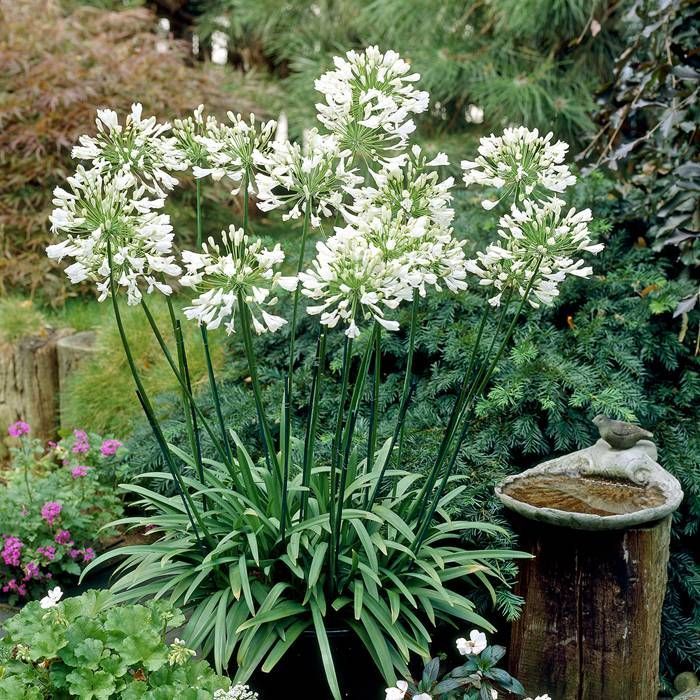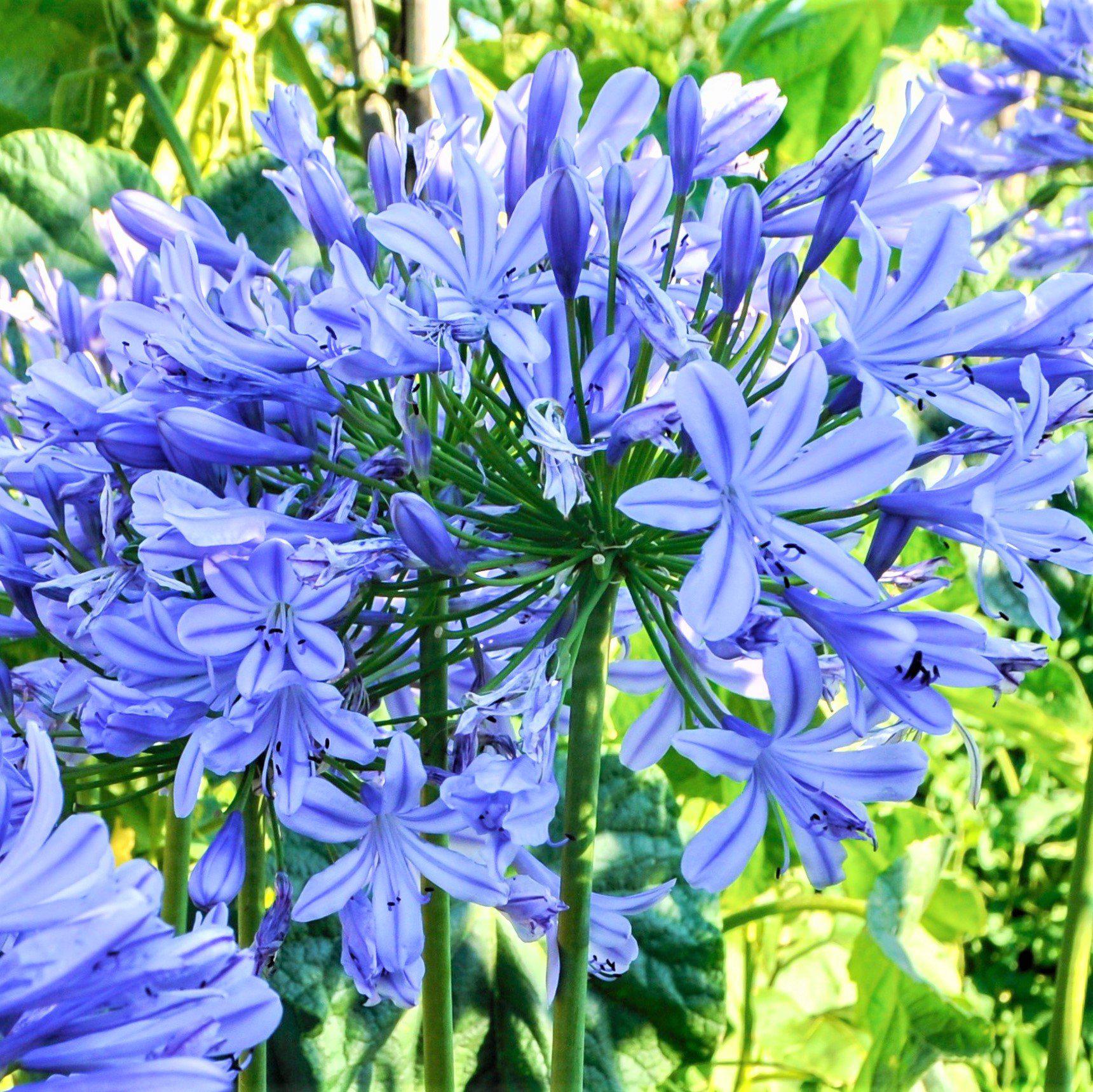Growing Agapanthus: A Full Overview to Beautiful Blooms
Growing Agapanthus: A Full Overview to Beautiful Blooms
Blog Article
Mastering the Art of Agapanthus Care: Vital Actions for Healthy And Balanced Development and Vivid Flowers
In the realm of gardening, the growing of agapanthus stands as a satisfying endeavor for those who seek to nurture these classy blooming plants. From picking the best selection to grasping pruning methods, the journey in the direction of cultivating growing agapanthus plants is multifaceted and holds the essential to unlocking the full potential of these agricultural treasures.

Picking the Right Agapanthus Range

When selecting the right Agapanthus variety for your yard, take into consideration aspects such as environment viability, flower color, and growth habit. Agapanthus, typically referred to as Lily of the Nile or African lily, comes in a selection of colors varying from shades of blue and purple to white. Choose a blossom color that complements your existing garden scheme to create a harmonious landscape. Additionally, think about the environment in your area to ensure the Agapanthus range you pick can thrive in your specific conditions. Some selections are much more forgiving of cool temperatures, while others prefer warmer climates. Recognizing the growth behavior of various Agapanthus selections is crucial for correct placement within your yard. Some selections have a clumping growth practice, ideal for containers or boundaries, while others have a more spreading nature, ideal for ground cover or mass growings. By meticulously assessing these aspects, you can select the ideal Agapanthus range to enhance the beauty of your garden.
Ideal Growing Conditions
Considering the ideal environmental demands is vital for successful Agapanthus cultivation. Agapanthus thrives in well-draining soil with a slightly acidic to neutral pH level. When planting, select a place that obtains complete sunshine to partial color. In hotter environments, providing some afternoon shade can prevent scorching of the fallen leaves. Agapanthus plants are sensitive to cool temperature levels and need to be safeguarded from frost throughout cold weather.
To ensure healthy development and vivid blooms, plant Agapanthus bulbs at a deepness of concerning 2-4 inches and room them 8-12 inches apart. Mulching around the base of the plants assists preserve dampness and reduces weed development.
Watering and Fertilizing Tips
Keeping proper dampness degrees and offering essential nutrients are essential components in the treatment program for Agapanthus plants. When it involves sprinkling Agapanthus, it is essential to strike an equilibrium. If overwatered, these plants like regularly wet dirt however are vulnerable to root rot. Throughout the growing period, water deeply when a week, making certain the soil is well-draining to avoid waterlogging. see it here In hotter environments or throughout durations of dry spell, more constant watering might be required to maintain the soil uniformly wet. However, minimize watering in the wintertime to protect against water logged problems.
Fertilizing Agapanthus is essential for advertising healthy development and prolific blossoms. Use a well balanced fertilizer, such as a 10-10-10 formula, in the early springtime as new growth emerges. Repeat this application every 6-8 weeks throughout the growing season. Avoid too much fertilizing, as it can lead to lavish vegetation at the expenditure of blooms. Always follow the supplier's instructions for proper dilution and application techniques. By adhering to these watering and fertilizing ideas, you can guarantee your Agapanthus plants grow and create vivid, lasting blooms. my sources
Pruning Techniques for Agapanthus
Pruning Agapanthus plants at the appropriate times and with correct techniques is critical for maintaining their wellness and advertising ideal development and blooming. The ideal time to prune Agapanthus is in late winter or very early spring prior to brand-new growth arises.
Deadheading invested flowers can additionally reroute the plant's power into generating more blossoms instead than setting seeds. If you want to collect seeds for propagation, leave some flowers to fully grown and dry on the plant.
Remember to utilize clean, sharp tools to make accurate cuts and reduce the danger of presenting conditions. Agapanthus. Routine trimming will assist keep your Agapanthus looking healthy and balanced and cool while making sure a bountiful screen of gorgeous flowers
Taking Care Of Usual Pests and Illness
After making certain proper pruning strategies for Agapanthus, it is necessary to address typical bugs and diseases that can influence the wellness and vitality of these plants. Agapanthus plants are generally hardy however can still succumb to particular issues. One common insect that affects Agapanthus is the Agapanthus gall midge. This little, orange reference fly lays its eggs in the vegetation, bring about distorted growth and flower buds that fall short to open. To battle this bug, trim and damage any type of damaged plant components and consider making use of insecticidal soap.
In addition, Agapanthus plants can suffer from root rot if they are grown in badly draining dirt. By being alert and taking prompt activity versus illness and parasites, you can aid your Agapanthus plants grow and generate vibrant flowers. Agapanthus.

Final Thought
To conclude, grasping the art of agapanthus care involves picking the best variety, giving ideal growing conditions, correct watering and fertilizing, suitable trimming methods, and resolving typical pests and conditions. By complying with these essential steps, you can make sure healthy development and vibrant blossoms for your agapanthus plants. Remember to frequently check and preserve your plants to advertise their general wellness and long life.
To make certain healthy growth and dynamic blooms, plant Agapanthus bulbs at a deepness of about 2-4 inches and room them 8-12 inches apart. By following these watering and feeding suggestions, you can guarantee your Agapanthus plants prosper and produce lively, lasting flowers.
One common bug that impacts Agapanthus is the Agapanthus gall midget. In addition, Agapanthus plants can suffer from root rot if they are planted in inadequately draining pipes soil. By adhering to these vital steps, you can make sure healthy and balanced growth and dynamic flowers for your agapanthus plants.
Report this page